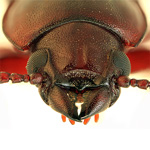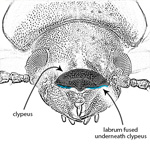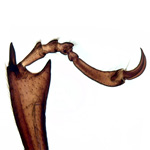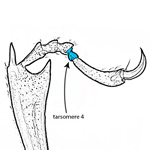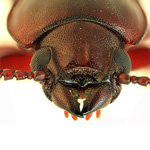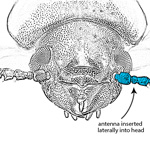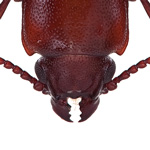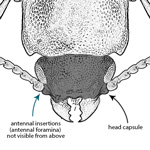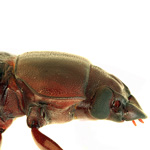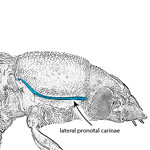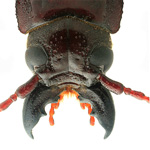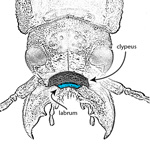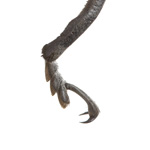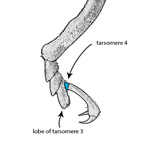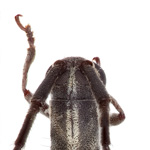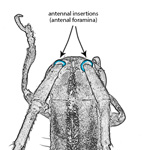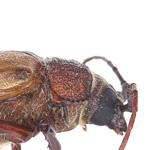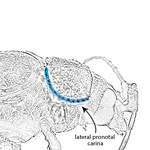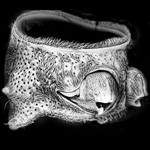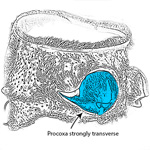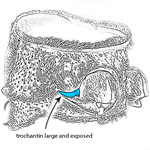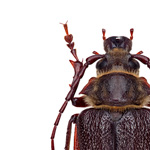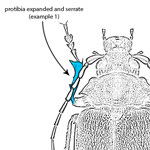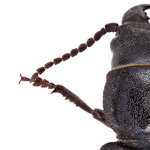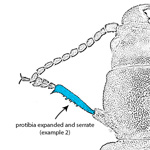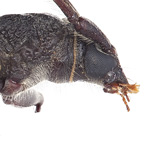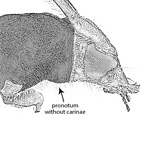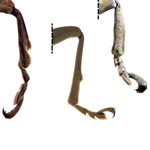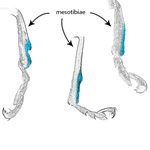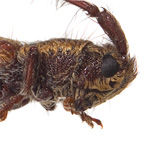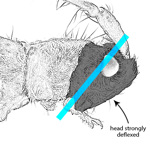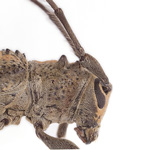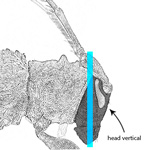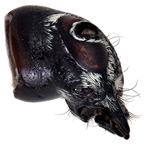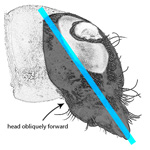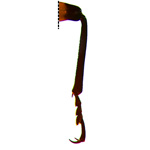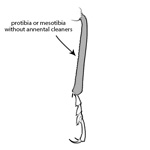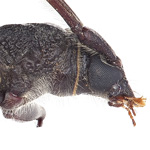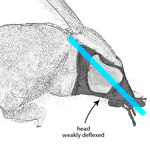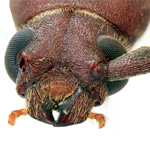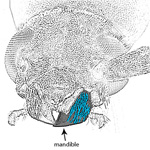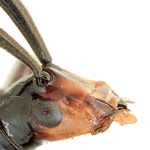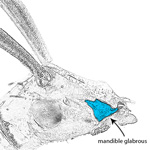Key to the 5 Cerambycidae subfamilies
couplet 1 of 4
Labrum fused to clypeus and not visible externally.
Tarsomere 4 relatively long, not concealed by lobe on tarsomere 3.
Antennal insertions (antennal foramina) lateral and not visible from above.
Lateral pronotal carinae entire and simple.
. . . . . . Parandrinae
- Labrum separate from clypeus and visible externally.
Tarsomere 4 very short and concealed by lobe on tarsomere 3.
Antennal insertions (antennal foramina) variable but they are clearly visible from above.
Lateral pronotal carinae absent, incomplete or complete.
. . . . . . . . . . . . Go to couplet 2 →
couplet 2 of 4
Lateral pronotal carinae present, often incomplete and dentate.
Procoxae strongly transverse with large exposed trochantins.
Protibia often expanded and serrate along external edge.
. . . . . . Prioninae
- Lateral pronotal carinae absent (sometimes pronotum irregularly crenulate laterally.
Procoxae oval or weakly transverse with small trochantins visible in procoxal extensions.
Protibia never expanded and serrate along external edge.
. . . . . . . . . . . . Go to couplet 3 →
couplet 3 of 4
Protibia with inner grooved antennal cleaner.
mesotibia with sulcate or comb-like antennal cleaner.
Head usually strongly deflexed or vertical.
...............exception Tmesisternini. Head is obliquely forward.
Procoxal cavites externally closed (exceptions Batocera and Rosenbergia)
. . . . . . Lamiinae
- Protibia and mesotibia without antennal cleaners.
Head usually prognathous or weakly deflexed.
Procoxal cavities externally closed or open.
. . . . . . . . . . . . Go to couplet 4 →
couplet 4 of 4
Antennal pedicel 1.5 times longer than wide and usually about 0.5 times as long as scape or antennomere 3.
Antennae short, at most reaching middle of elytra.
Mandible externally densely setose, without distinct tuft of long setae.
. . . . . . Spondylidinae
- Antennal pedicel subquadrate or transverse, ≤ 0.3 times as long as scape or antennomere 3.
Antennae variable but usually extending beyond middle of elytra.
Mandible externally glabrous or with distinct tuft of long setae.
Lateral pronotal carinae absent, incomplete or complete.
. . . . . . Cerambycinae
